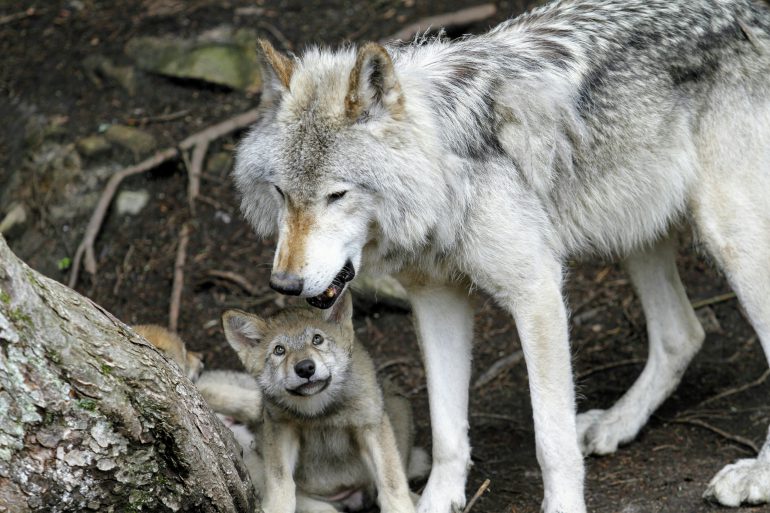Fear and debate have reignited across the Netherlands after yet another wolf attack, this time involving a six-year-old boy in the Utrecht woods near the Pyramid of Austerlitz. The incident has intensified the question: does the wolf stillhave a place in our small and densely populated country?
According to De Telegraaf newspaper, the boy was playing with a group of children and adults at Den Treek-Henschoten estate when a wolf suddenly grabbed him and dragged him a short distance into the woods. ‘Thanks to theappropriate action of the adults present, who hit the wolf with a stick, the animal released the boy and ran away,’ an estate spokesperson told the newspaper. The child, from Utrecht, was taken by ambulance to the Utrecht Medical Center with bite and abrasion wounds, some of which required stitches.
The boy’s father told RTV Utrecht, ‘We’re shocked by what happened and we realize we were kind of lucky. We have to learn to live with the fact that wolves are back.’ He stressed that the family had not ventured deep into the forest: ‘It’s not like we went for a walk deep into the woods where no one normally goes.’
A familiar predator
DNA testing is underway to confirm if the attacker was the so-called “problem wolf” named Bram, already blamed formultiple incidents. According to the Den Treek spokesperson, ‘Let’s face it, it probably wasn’t a rabbit. And this is already the umpteenth incident.’ Almost exactly a year ago, a child was attacked at the same spot, and in May a hiker was bitten twice in the leg. Provincial authorities have already decided that Bram must be shot, with a court upholding that decision last week despite objections from various animal protection groups. Hunters are now actively searching forBram, but the forest remains busy with holiday visitors. ‘Let’s hope the wolf is caught soon,’ the spokesperson added.
Safety warnings
The municipality of Woudenberg, where Den Treek is located, is urging people not to visit with children or dogs until the Fauna Management Unit Utrecht completes its work. Mayor Magda Jansen states adults must also remain “very alert”when entering the forest. ‘The forest should be a place for young and old where they can play and walk… However, the reality is different, and that makes this advice necessary.’
Local authorities stress that while wolves generally avoid humans, extra caution is needed in known wolf habitats. Visitors are advised to stay calm and avoid running if a wolf appears, instead slowly backing away while keeping the animal in sight. They should never attempt to feed or lure it. Staying on marked paths, travelling in groups, and avoidingthe forest between sunset and sunrise are strongly recommended. Dogs should be kept on a leash no longer than ten meters, as wolves may see them as prey or intruders. Any sightings or threatening encounters should be reported immediately to the police.
Conservationists push back
Animal protection group Animal Rights argues that the real problem is human intrusion. ‘People still run, cycle, picnic, let dogs run, and ride horses in the territory of a wolf pack with cubs about 3 months old. This is the habitat of a wolf pack,’ the group states. ‘Either you accept the possibility of these kinds of incidents, or you should temporarily close the area.’
Divided public opinion
At the Pyramid of Austerlitz, visitors appear split between caution and indifference. Some, like mountain biker Roald, say, ‘Get rid of that animal… Most wolves don’t do this, just that one.’ Others, including a group of Polish hikers, seem unfazed, noting they are used to wildlife encounters back home: ‘We stay calm and slowly back away… And we don’t make any sudden movements.’ Still, wolf expert Dick Klees is clear: if DNA confirms Bram is responsible, ‘remove himfrom the population’.
As the Netherlands grapples with the growing number of human-wolf conflicts, the debate remains fierce: should thecountry adapt to coexist with this predator, or accept that some wolves, at least, may have no place here?
Written by Nicole Bea Kerr
